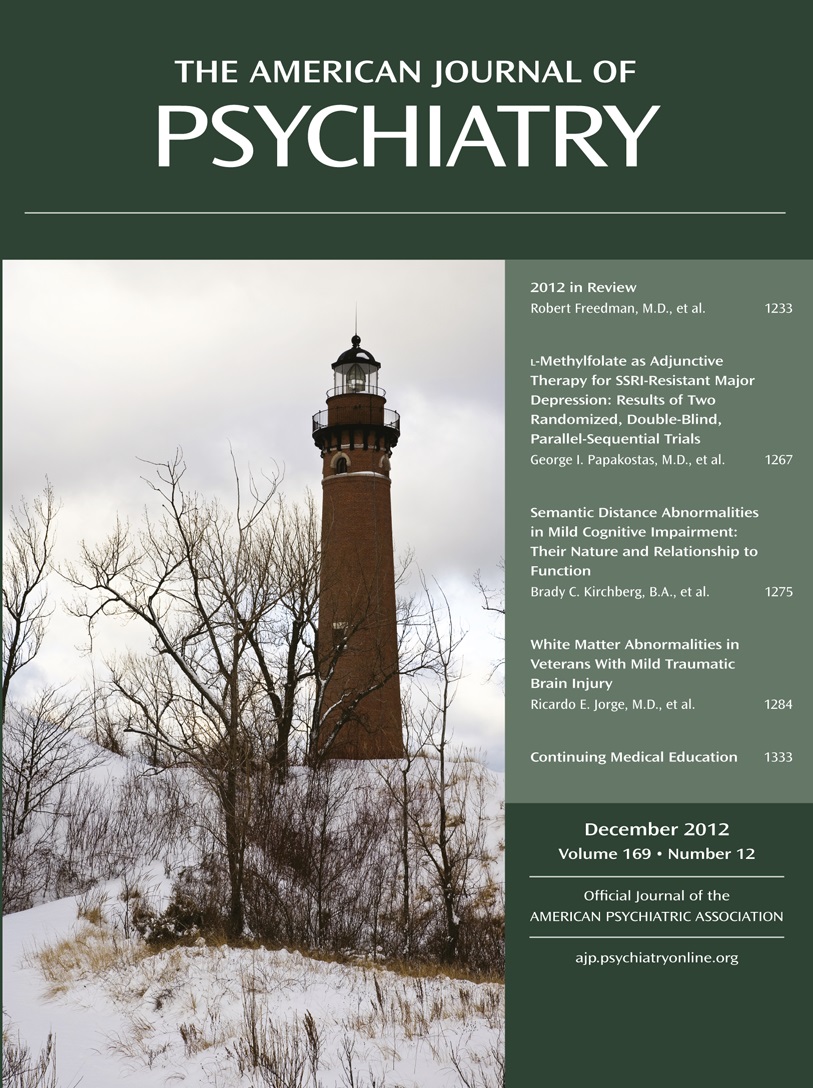Genetic Variation in KCNH2 and a Unique hERG Isoform in Patients With Schizophrenia: Efficacy-Safety Link
To the Editor: Based on the results of an NIMH double-blind trial and the Clinical Antipsychotic Trials of Intervention Effectiveness (CATIE) study, Apud et al. (1) have provided support for the hypothesis of Huffaker et al. (2) that a genetic variation in the hERG1 protein, the KCNH2 3.1 isoform, may be related to treatment response. Could this hypothesis be extended to personalized medicine to minimize the risk of dysrhythmias related to QTc prolongation by giving antipsychotics only to those who will benefit from them? Or better, could we de-risk compounds by developing more targeted drugs that only bind to brain KCNH2 3.1?
The patient samples in the NIMH (N=54) and the CATIE study (N=364) are too small to predict with any statistical certainty whether or not individuals with the KCNH2 3.1 isoform were more likely to experience QT/QTc prolongation and related events, since torsade de pointes is extremely rare (3). In phase 1 of the CATIE study (4), 0/231 QTc prolongation events were reported in the olanzapine group, 6/214 (3%) in the quetiapine group, 7/218 (3%) in the risperidone group, 2/172 (1%) in the perphenazine group, and 2/148 (1%) in the ziprasidone group; these values were not statistically different, and there were no instances of torsade de pointes. Citrome and Stroup (5) calculated the number needed to harm based on these data and found it was between 31.1 and 86. Were these patients with QTc prolongation treatment responders? Did they carry the isoform KCNH2 3.1?
Extending this inquiry, might it be valuable to perform genotyping on patients in antipsychotic drug clinical trials who experience QTc prolongation or its sequelae?
1 : Genetic variation in KCNH2 associated with expression in the brain of a unique hERG isoform modulates treatment response in patients with schizophrenia. Am J Psychiatry 2012; 169:725–734Link, Google Scholar
2 : A primate-specific, brain isoform of KCNH2 affects cortical physiology, cognition, neuronal repolarization, and risk of schizophrenia. Nat Med 2009; 15:509–518Crossref, Medline, Google Scholar
3 : The safety of atypical antipsychotics: does QTc provide all the answers? Expert Opin Drug Saf 2011; 10:341–344Crossref, Medline, Google Scholar
4 : Effectiveness of antipsychotic drugs in patients with chronic schizophrenia. N Engl J Med 2005; 353:1209–1223Crossref, Medline, Google Scholar
5 : Schizophrenia, Clinical Antipsychotic Trials of Intervention Effectiveness (CATIE), and number needed to treat: how can CATIE inform clinicians? Int J Clin Pract 2006; 60:933–940Crossref, Medline, Google Scholar



